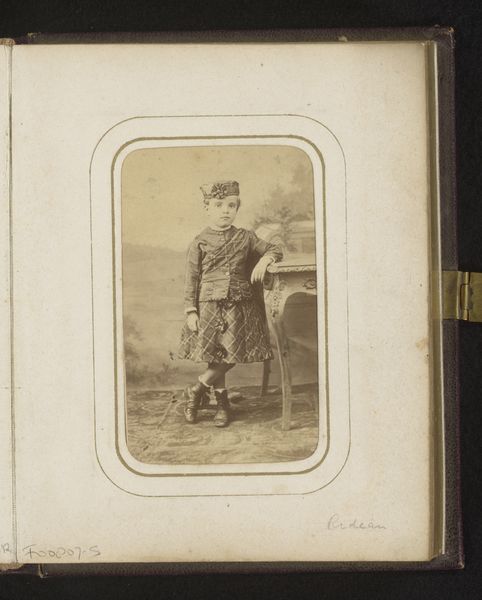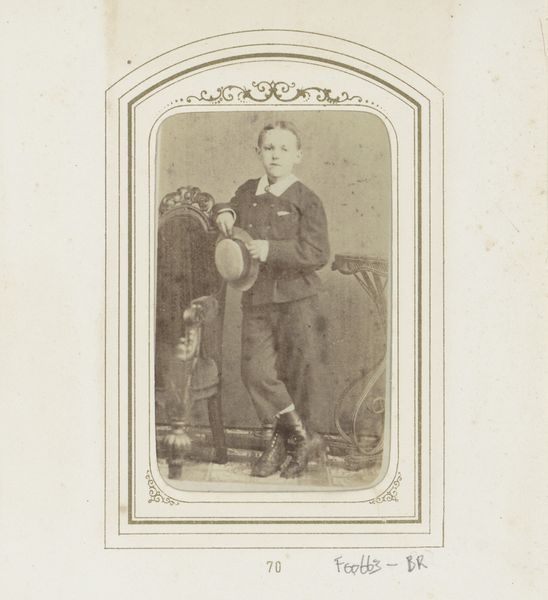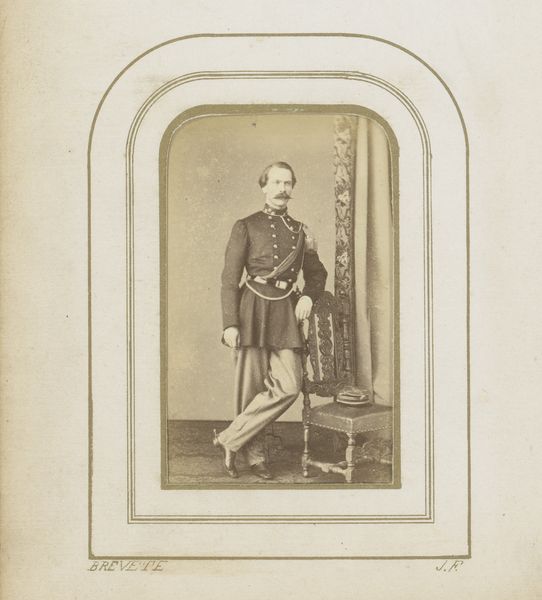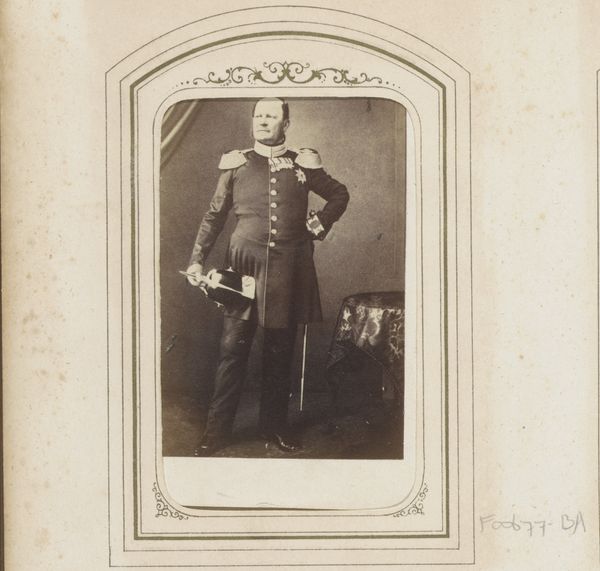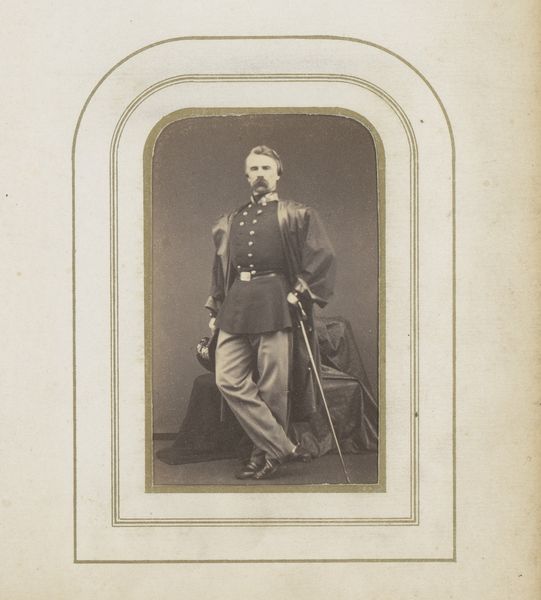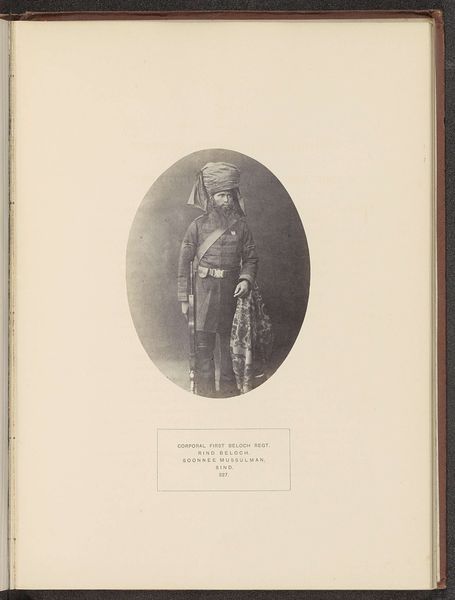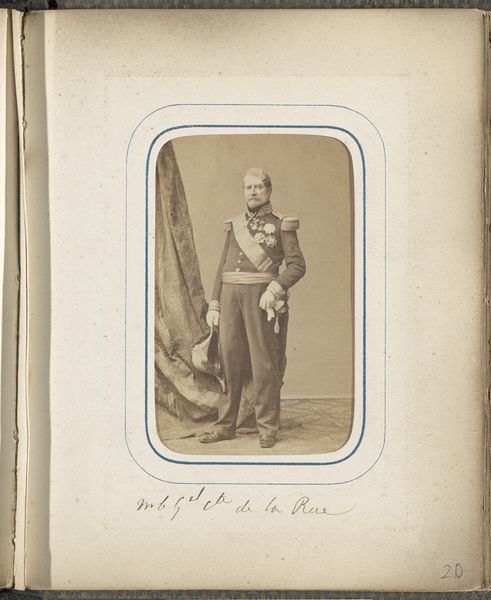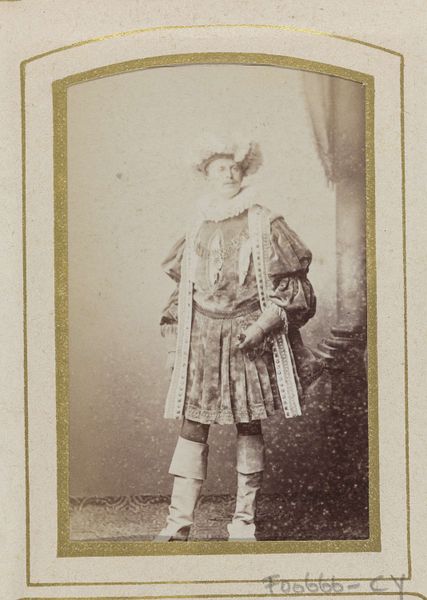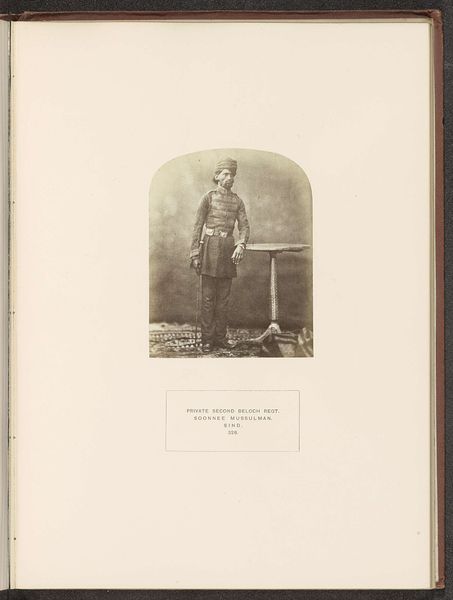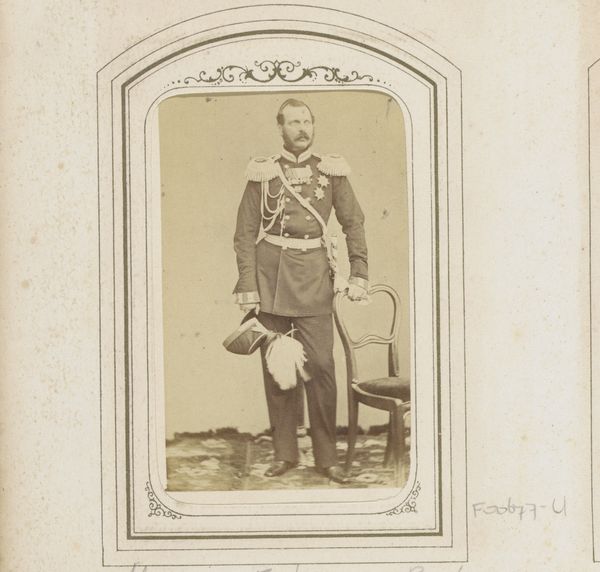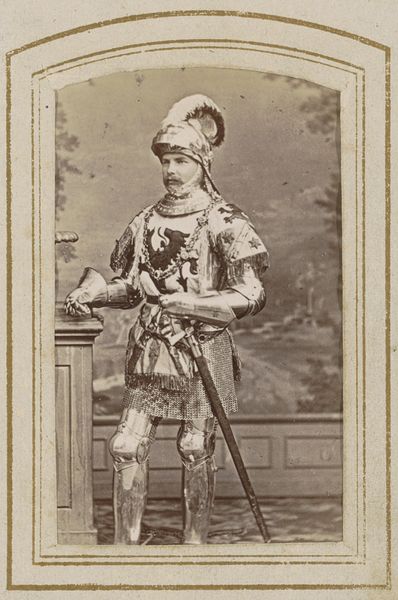
photography, gelatin-silver-print
#
portrait
#
photography
#
historical photography
#
gelatin-silver-print
#
19th century
#
genre-painting
Dimensions: height 85 mm, width 53 mm
Copyright: Rijks Museum: Open Domain
Curator: Here we have Hendrik Anthonie Karel Ringler’s “Portret van een staande jongen bij een stoel,” a gelatin-silver print estimated to have been made between 1872 and 1879. Editor: The sepia tone immediately gives it such an antique feel. Look at the boy's pose! He looks stiff, maybe even a little resigned. Curator: It's interesting to consider the materiality here. The gelatin-silver process itself democratized photography somewhat, allowing for mass production. Think about how many portraits like this would have been made. What narratives about class or familial identity were being carefully constructed, and how? Editor: That's a good point. It reads as a middle-class attempt to mimic aristocratic portraiture, but through this newly accessible technology. The boy's outfit almost looks like a uniform, emphasizing a kind of ordered respectability. There’s a subtle power dynamic—a visual assertion of status and control during an era of immense social change. Curator: Absolutely. Consider the ornate chair, too—clearly a prop intended to signify wealth and sophistication. What was the social impact of suddenly being able to render your material surroundings with such precision, so much faster than painting? This object suggests that photographs began serving as records for emerging industries as a result. Editor: Exactly, and photography gave agency to subjects previously excluded. Looking at the labor involved - from the studio workers preparing the chemistry to the subject sitting for extended periods - it brings forth interesting intersections. What were his thoughts at that moment? Or did it matter at all, perhaps his role here was merely a signifier of larger family aspirations? Curator: He's so still, there in that era’s constraints! Thinking about those conditions can change how you view such historical photographs. Thanks to its relatively speedy methods of production, portrait photography soon turned into a cultural product. Editor: And still it can reflect the larger structures around race, gender, or ability. Analyzing those traces makes history not just about who made the pictures but who the image shaped—and whose stories were silenced. It challenges the traditional boundaries of art, inviting contemplation around societal values during the turn of the century and even present days. Curator: Precisely, and paying attention to the material conditions of its production gives us new opportunities to explore. Editor: It invites more dynamic ways to contextualize. I walk away with new considerations every single time!
Comments
No comments
Be the first to comment and join the conversation on the ultimate creative platform.
